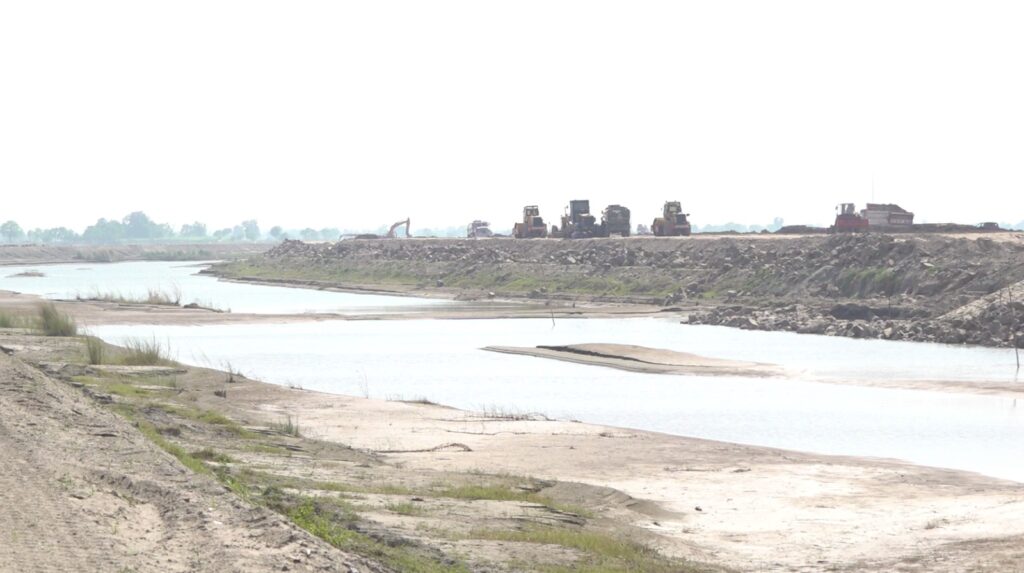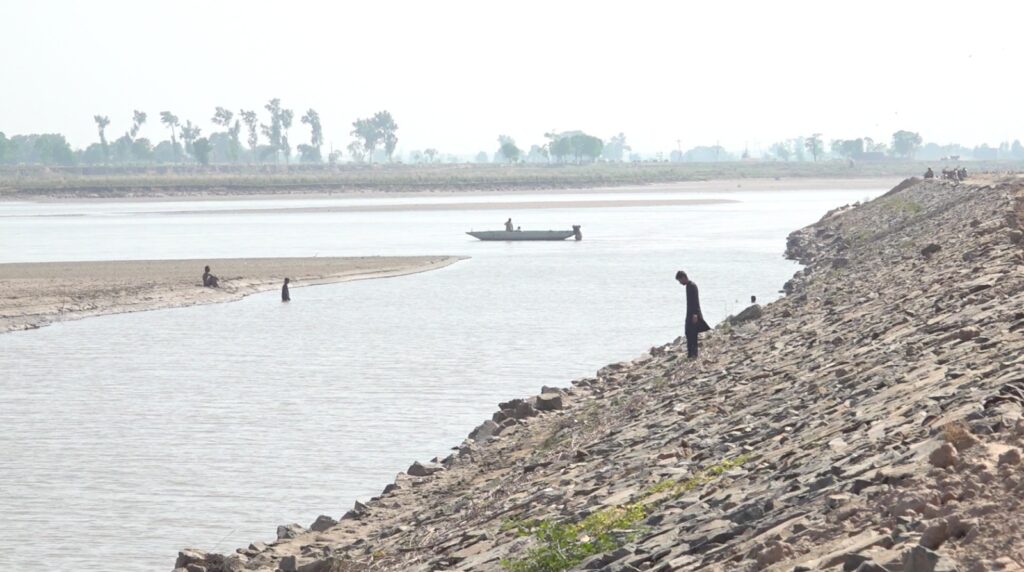- Web Desk
- 2 Minutes ago
Reviving the Ravi: A Journey from Drought to Renewal The River Training Works Project Unfolds
-

- Shiraz Hasnat
- Oct 15, 2024

Once a vibrant lifeline flowing through Lahore, the Ravi River symbolized the essence of life for the city and its inhabitants. Yet, over time, the actions of those living along its banks transformed this vital waterway into a shadow of its former self. The impacts were dire: migratory birds vanished, and aquatic life faced the threat of extinction. In response to this neglect, the river grew tumultuous, ultimately reduced to the status of a mere drain.
However, a new chapter is unfolding for the Ravi. In an effort to rejuvenate this crucial waterway, the government has launched an ambitious initiative known as ‘River Training Works.’ This project aims to restore the river’s natural flow and revive the ecosystems that once thrived along its banks. As work begins, there is renewed hope for the Ravi to reclaim its place as a vital source of life for Lahore and its surroundings. River Training Works, located at Siphon, just 30 kilometers from Lahore.
Once a majestic waterway that flowed abundantly, the Ravi now languishes in a state of drought, remaining dry for most of the year, while pollution festers along its banks.
According to Mohsin Atiq, Director of Hydrology at the Ravi Urban Development Authority, the river’s plight began in 2001 with the construction of the Thein Dam, also referred to as the Ranjit Sagar Dam, by India. This dam drastically reduced the water inflow to the Ravi by an astonishing seventy-five percent. Consequently, the river now only receives significant water during the monsoon season, which in recent years has seen flows peak at around 30 thousand cusecs. This influx of water, albeit temporary, holds the potential to rejuvenate the Ravi, creating a substantial reservoir that could recharge the surrounding land and support fish breeding.
However, in the absence of monsoon rains, water levels plummet from December to March, highlighting the urgent need for sustainable solutions. Ruda’s River Training Works aims not only to revive the river’s flow but also to restore the ecological balance that has long been disrupted, offering hope for a brighter future for the Ravi and the communities that depend on it.
Twenty-four years after the construction of a dam in India drastically affected the Ravi River in Pakistan, a new project has emerged aimed at revitalizing this vital waterway. However, a pressing question remains: where will the water come from?
Muhammad Asif Iqbal, Chief of Civil Works at the Frontier Works Organization (FWO), sheds light on the innovative solution: water harvesting. This technology allows for the collection of excess rainwater and standing water that would otherwise go to waste. By capturing this water and directing it underground, it can be filtered through boreholes, resulting in clean water that blends with the existing groundwater.
Iqbal emphasizes that for years, valuable rainwater has been squandered. If harvesting efforts are implemented consistently over the next five to ten years, the water table could significantly rise, contributing to the rejuvenation of the Ravi River.
As part of the River Training Works project, earthen embankments are being constructed along both banks of the Ravi River, designed to channel the river’s flow in a controlled manner. The Ravi Urban Development Authority has already completed the first phase, spanning three kilometers, marking a significant step toward revitalizing this vital waterway.
Rao Intizar Ali, Project Director of River Training Works, explains that the initiative aims to redirect the river’s water strategically. This approach mirrors successful efforts undertaken by developed countries in their plans to create new, pollution-free urban areas. The project envisions a transformed landscape, complete with various recreational spaces for the community, promoting a healthier lifestyle for residents.
The River Training Works project is set to commence directly from the Siphon, according to Mohsin Atiq, Director of Hydrology. This initiative will create marginal zones extending up to seven kilometers, designed to guide water into a newly constructed channel. Following this, a one-kilometer channel will span three critical points: passing over bridges on the Lahore-Sialkot Motorway and Shahdara, ultimately connecting to the Hudiara Drain. In total, the project aims to cover a full length of forty-six kilometers.
While the focus on water storage is crucial, a pressing question remains: will the new embankments be able to withstand floods? According to Mohsin Atiq, Director of Hydrology, successful flood management can be modeled on dams built in neighboring countries, which feature one-kilometer-wide embankments. These structures are designed with sufficient height to ensure that floodwaters remain safely below their crests.
Over time, settlements have encroached upon the banks of the Ravi, leading to significant pollution and posing serious threats to aquatic life. However, project experts are optimistic that the River Training Works initiative will help restore the river’s former vitality and cultural significance.
To support the project, approximately 1,000 cusecs of water will be needed. During the winter months, when water loss is minimal, this water will be channeled from the BRB to the Hudiara Drain. This strategy aims to prevent the river from drying up, mitigating flood risks while enhancing water quality. The revitalization efforts are expected to not only protect aquatic ecosystems but also ensure that the surrounding areas benefit from cleaner water, ultimately rekindling the rich cultural heritage that once thrived along the banks of the Ravi.
This initiative not only aims to restore the river’s flow but also presents a sustainable approach to managing water resources in the region, offering renewed hope for both the ecosystem and the communities reliant on the river.









